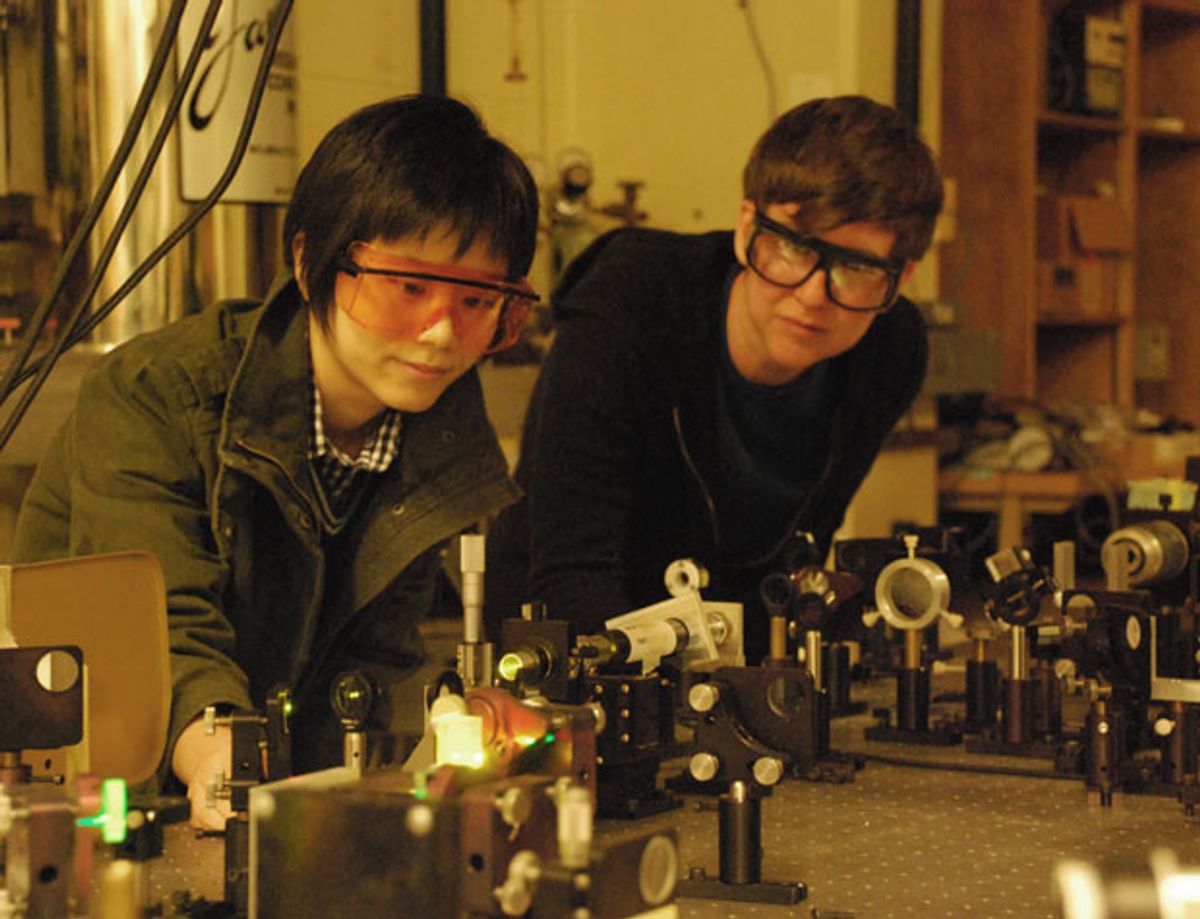Nanowires made from III-V semiconductors like indium gallium arsenide are having a bit of run of late. Yesterday, I reported on a new method for growing them on graphene.
Now researchers at the University of Cincinnati have discovered that a newly developed architecture for semiconductor nanowires has a hidden nook in which to find electrons and holes. The discovery opens up a new understanding of the fundamental physics of nanowires.
University of Cincinnati physics professors Howard Jackson and Leigh Smith, who together led the research, believe that applications of this new structure could range from solar cells to environmental sensors.
“This kind of structure in the gallium arsenide/aluminum gallium arsenide system had not been achieved before,” Jackson said in a press release. “It’s new in terms of where you find the electrons and holes, and spatially it’s a new structure.”
The researchers grew a quantum well tube around the inner core of the nanowire. With this new architecture, they discovered that electrons were distributed in an unusual way around the facets of the hexagonal nanowire.
“Having the faceting really matters. It changes the ballgame,” Jackson said in the release. “Adjusting the quantum well tube width allows you to control the energy—which would have been expected—but in addition we have found that there’s a highly localized ground state at the corners which then can give rise to true quantum nanowires.”
The nanowires reportedly have a high quantum efficiency that means they should have a very high electrical sensitivity to light, making them potentially ideal for photovoltaic applications.
While the researchers believe that the impact of these nanowires may still be somewhat far off, based on the preliminary stage of this line of research, they think it should present a new paradigm for understanding the fundamental physics surrounding nanowires.
Photo: Howard Jackson, the University of Cincinnati
Dexter Johnson is a contributing editor at IEEE Spectrum, with a focus on nanotechnology.




